




























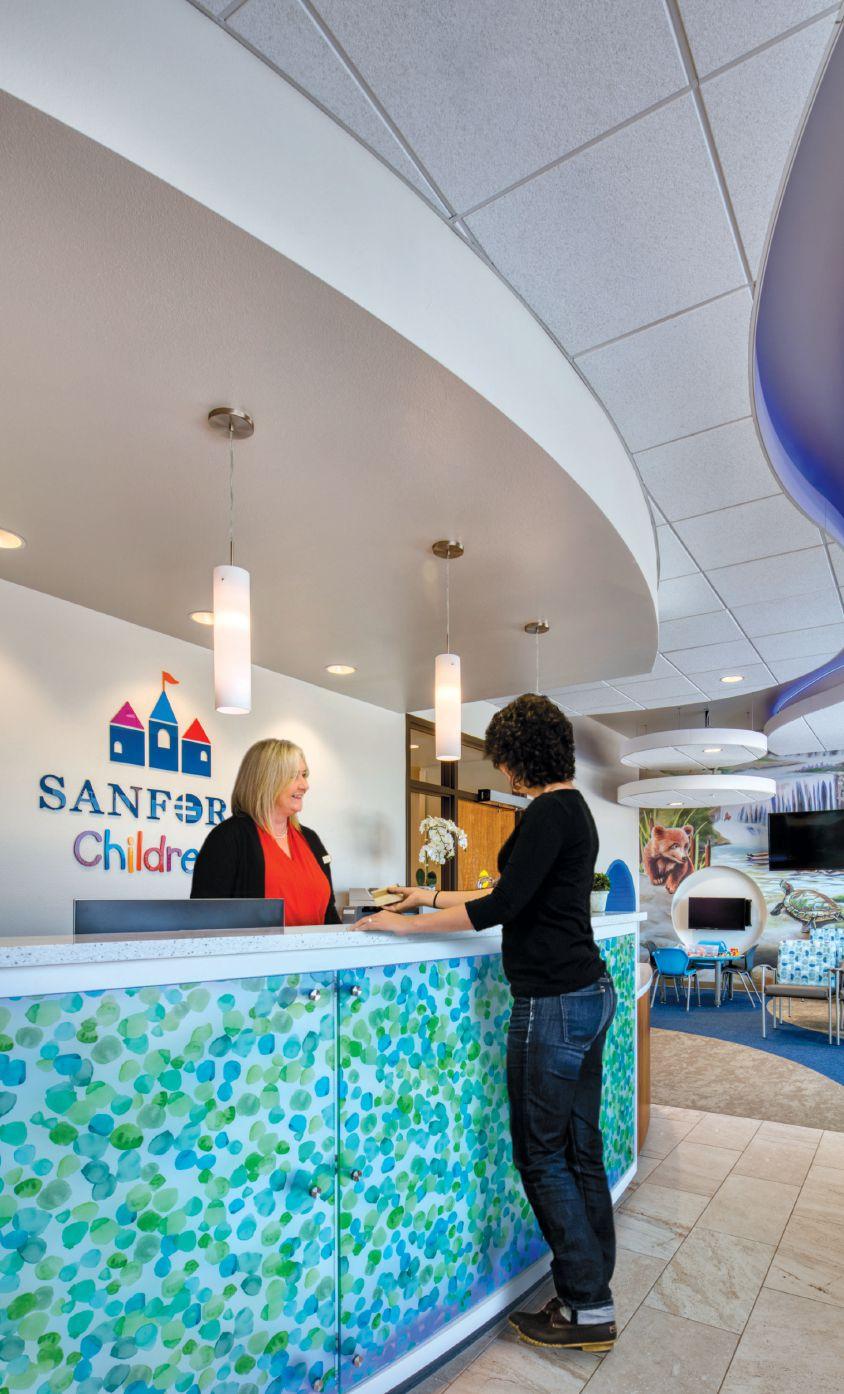
Sa nf or dH ea lt hi sa ll ab ou tb ri ng in g fu ntot hehe alin gp ro ce ss .I nt he ne wS an fo rd Ch ildr en ’s Th er ap ie s Ce nt er in Bi sm ar ck ,N or th Da ko ta —r el oca te dtoc re at eam or e ef fi cie nt,f am il y- fr ie nd ly ex perien ce —e nt er ta inin ga nd upli ft in gs pac es tr an sf or mr ou ti ne th er ap eutic treatm ents in to enga gin ga ct ivi ti es fo rp at ien ts an df amili es
Sa nf or dH ea lt hi sa ll ab ou tb ri ng in g fu ntot hehe alin gp ro ce ss .I nt he ne wS an fo rd Ch ildr en ’s Th er ap ie s Ce nt er in Bi sm ar ck ,N or th Da ko ta —r el oca te dtoc re at eam or e ef fi cie nt,f am il y- fr ie nd ly ex perien ce —e nt er ta inin ga nd upli ft in gs pac es tr an sf or mr ou ti ne th er ap eutic treatm ents in to enga gin ga ct ivi ti es fo rp at ien ts an df amili es





We designtheplaces wheregreat people thrive.







For bu si ne ss ow ne rs ,s ta ff in gw ill al way sbea mo ng th ei rt op co nc er ns .W ill yo ubea ble toat tr ac tt he ta le ntyo un eed?C an yo uk ee pt he sk ill ede mp lo ye es yo uh av e? Thes hort an sw er is ye s–i fyou ar es tr ateg ic an df ollo wt hr ou gh on th in gs th at matter.
Of te n, in ti gh tm ar ke ts ,o wn er sm ust co mp et ef or qu al it ye mp lo ye es th at wi ll rep re se nt th ei rc ompa ny we ll .Work er av ai la bi li ty ca na ls oa ff ec tp la ns for gr ow th .Sow he nyou pu to ut th at “helpw an te d” si gn, ke ep thes et ip sinm in d:
Th er ea re so me th in gs mo ne yc an’t bu y. As en se of pu rp ose,c ompa ny va lu es, be in gp ar tofatea mo fgood people.Thi nk aboutt he ki nd of people youwantwork ing fory ou an dw ha tt hi ng st he yv alue. Ma ke emplo ye es pa rt of yo ur mi ss ion .Bec ho os y–good pe opl ew an tto work wi th go odp eople.
On es iz ed oes no tf it al l. Sa la ry,h ea lt hi ns uran ce, lon g- te rm ca re in su ra nce ,r et ir ement, va ca ti on, he al th sa vi ng sa cco un ts (H SA s) ,f le xi ble sp en di ng ac co un ts(F SA s) –d if fere nt peo ple wa nt di ff erent th in gs. Yo un gp eo pl em ay va lu ev ac at io no ve rs al ar y; pa re nt sm ig ht va lu eh ea lt hi ns ur an ce mo re. Wo rk wi th yo ur be ne fi ts pa rt ne rtoo ff er ag ood mi xa nd ad ap ttoy ou rs ta ff ’s ne ed s.
Hi ri ng is on et hi ng ,r et en ti on is an ot he r. Empl oy ees wa nt to be he ar da nd su pp or te d. If em pl oy ee sl ose moment um ,t he y’ ll look fornew op port un it ie s. Inve st in tr ai ni ng.Amentorshipprogr am or regu la rc he ck-i ns wi th le ad er sh ip wh er ee mp lo ye es ca ns ha reide as wi ll sh ow yo u’re inve sted.


Gi ve yo ur em pl oye es ar ea so nt ow or kh ar de ve ry da y–a nd ma ke it fu n. Te am-b ui ld ing ,p ro du ct iv ity contes ts ,a nd in ce nt iv es allow employ ee stoh av ef un wh iles up port in gt he bu si ne ss AN Dd oi ng some thing fort he ms el ve s.
Cus to me rs ne ed in fo rm at io na nd pe rs ua sio n. Job se ek er sn ee di nf or ma ti on –a nd ye s, ma rke ti ng–to o. Fi gu reou tw ha ty ou rv al ue pr op os it ion is for employeesa nd sell your work placetocandidates. Ma ke su re em pl oy ee s( yo ur be st so ur ce of le ad s) ar eh ap py an dk no ww haty ou st an df or.O ff er te st im on ia ls a nd at tr ac tatten ti on .I t’sj ust go od bu si ne ss.
Even to day, youc an finda nd ke ep go od pe ople.I nvest inthings that ma ke your bu si nessspecial .Somet hi ngs youc ontrol:c ul tu re, mi ss ion, be in gagoo de mplo ye r. For ot he rs,you’l lw antab enefits pa rt ne ra nd bu si ness consulta nt.You rbusinessisonlyasgood as your people. Ma ke su re they ’ret he best.






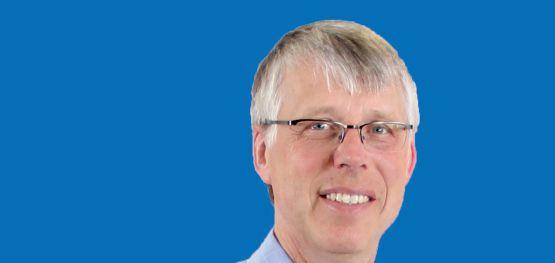








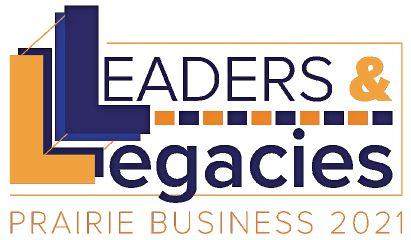
Ourcommitmenttothiscommunityisabout morethanputtingenergyintotransmission lines. We’r eintobuyinglocal.Investing here.Supportingcarbon-freeinitiatives. Deliveringenergyyoucancountontobe cleanerandsafer. We’rehereto keepliving roomlampslit.Andfuturesasbrightaswe canmakethem.Becausedoingourpartfor theplacesweliveandworkisgoodenergy.

©2020XcelEnergy
Vi sit xc elenergy.com to learnmore.
TheUniversityofNorthDakotaisproudtosalutePrairieBusinessmagazine’s2021 Leaders &Legacies—aTop10listofsomeofthe region’smostinnovativeandsuccessful businessexecutives.Bothenterprisingandinspiring,they’vemadeanindeliblemarkintheir communitiesandbeyond.Congratulations!toall
Charlie Vein
RetiredPresident AE2S
Pete Fullerton CEO
CornerstoneBank
WilliamA.Hinks
FounderandChairmanoftheBoard FurnitureMart
KathyMeagher
RetiredPresidentandCEO
SpecialOlympicsNorthDakota
Dave Molmen CEO
AltruHealthSystem
KevinDonnay President Widseth
RichardVetter,MD ChiefMedicalOfficer
EssentiaHealth
CraigLarson CEO StarionBank
EricHardmeyer President BankofNorthDakota
July is a special time for Prairie Business. It is the time when the magazine recognizes a handful of exceptional business executives in the region – those who have made significant contributions as leaders or who have left a legacy of service. Sometimes both.
This is that issue, wherein is profiled nine Leaders & Legacies recipients. The magazine also will honor the recipients, as well as other award winners, at a banquet later this year.
Congratulations to all of this year’s recipients, And thank you for all you do in the region to make this a better place to live and work.
Fittingly, this issue also is about what companies are doing to attract and retain employees, what their cultures are, and what tips and tricks work for them in attracting top talent. It all starts at the top, according to reporting in our story about leadership.
Leadership at any company, large or small, is “immensely important,” said Noah Fisher, human resource and organizational development manager with EAPC Architects Engineers in Fargo. “If you don’t have leadership, communicating, providing guidance – if there’s an absence of it, that absence gets filled by employees. That’s not a bad thing, but I think culture starts with support, whether it’s with attitudes and behavior or the way we interact with each other.”
There are many different types of leadership styles, but one trait that all leaders have in common is that they lead, whether for good or ill, by their example.
Among the other stories in this issue is one about ESOPs – Employee Stock Ownership Plans and how some businesses have benefitted from that initiative. Not only do ESOPs help attract talented new hires, but they help retain them. For starters, employees are more invested – literally – in their company. That means, for many, no task is too menial or overbearing for them, because they know at the end of the day, putting their best foot forward pays big dividends.
How many ESOPs – and participants – are in the Prairie Business’s three-state coverage area? Check it out in the story. The numbers continue to grow.
There also are some excellent columns by experts in their respective fields – all to help business leaders in the region tap new ideas that may help them in their own line of work.
The Prairie Business team is extremely excited about this issue. We hope you are, too.
PUBLISHER KORRIE WENZEL
AD DIRECTOR STACI LORD
EDITOR
ANDREW WEEKS
CIRCULATION MANAGER BETH BOHLMAN
LAYOUT DESIGN
JAMIE HOLTE
ACCOUNT MANAGER
NICHOLE ERTMAN 800.477.6572 ext. 1162 nertman@prairiebusinessmagazine.com
Prairie Business magazine is published monthly by the Grand Forks Herald and Forum Communications Company with offices at 375 2nd Avenue North, Grand Forks, ND 58203. Subscriptions are available free of charge. Back issue quantities are limited and subject to availability ($2/copy prepaid). The opinions of writers featured in Prairie Business are their own. Unsolicited manuscripts, photographs, artwork are encouraged but will not be returned without a self-addressed, stamped envelope.
SUBSCRIPTIONS
Subscriptions are free www.prairiebusinessmagazine.com
ADDRESS CORRECTIONS
Until next time, Andrew Weeks
I look forward to hearing from you at aweeks@prairiebusinessmagazine.com or 701-780-1276.
Prairie Business magazine Box 6008 Grand Forks, ND 58206-6008
Beth Bohlman: bbohlman@prairiebusinessmagazine.com
ONLINE www.prairiebusinessmagazine.com








Any company’s efforts to attract and retain employees, how they grow them into individual leaders, and what their office cultures are like, all start at the top of the command chain –its core leadership.
An absence of effective leadership means other important items likely also are lacking. But if a good leadership team is in place, it makes all the difference both to employees and the company as a whole.
But what is it that makes an effective leader?

Some skills and traits may depend on the company or industry, but there are certain tried-and-true ones that serve most any business well – caring and communication, for instance, both which help establish the culture of a workplace.
Such culture can have big dividends.
Leadership at any company, large or small, is “immensely important,” said Noah Fisher, human resource and organizational development manager with EAPC Architects Engineers in Fargo. “If you don’t have leadership, communicating, providing guidance – if there’s an absence of it, that absence gets filled by employees. That’s not a bad thing, but I think culture starts with support, whether it’s with attitudes and behavior or the way we interact with each other.”

Many different types of leadership styles exist, but one trait that all leaders have in common is that they lead, whether for good or ill, by their example.

EPAC wants all of its employees to take ownership — but it also has an effective core of leadership. Having that in place helps make employees take ownership.
In fact, in an engagement survey the company conducted that’s exactly how most employees said they viewed themselves – as leaders.
“One of the questions that we asked employees was, ‘do you view yourself as a leader in this company?’ Over half of our employees said that they did,” Fisher said.
“To me that resonates that people feel that their behavior, how they approach work, how they approach just being an EAPC employee, it rubs off and impacts other people and I would absolutely agree with that.”
Fisher also said: “Sometimes you have leaders who are leaders by title, and sometimes you have leaders who are leaders because of the way that they conduct themselves. It was really a kind of an awesome thing to see that so many of our employees view themselves as leaders.”
Fisher said the company started an initiative a little more than a year ago that aims to have each employee complete development plan – basically, an outline for the upcoming year, or two years and three years down the road.


It aims to leverage employees and their talents to positions where they can best thrive in the workplace.
“Along the way that helps us bench strength by developing people for potential future positions, leadership positions in the firm,” he said. “It helps people envision their career with you as an employer, when you get them thinking, ‘well, three years from now what do I see myself doing here?’ When you start to create that image and envision steps to get there, I think it strengthens the relationship of employee and employer.”
Lori Meader, director of human resources at Arvig in Perham, Minn., said the company likes to promote from within and is always looking to onboard new talent and diversify the workforce when possible.
Is it difficult to find women to fill leadership roles? It depends on the position – and not just in leadership.
The company does have some female technicians, for instance, but there seems to be more availability for men to fill those types of roles.
“In my opinion, not the company’s, that goes all the way back to the way our schools are structured,” she said, noting many institutions of learning do not encourage females to pursue STEM-related fields.
“A lot of women have not gone in that direction because they never had that exposure and support or encouragement. I think that’s
starting to change a little, but right now it makes it hard for us to find women for those technical positions.”
Meader also said: “But I would say, it depends on the position. … Our first choice is to promote from within, especially for leaders. We’re probably about 50/50 in our leadership across the company.”
Arvig tries to diversify its workforce as much as possible, but that depends on the office — Arvig has about 850 employees scattered across four states — since each office is a reflection of its location.
If there is more diversity in a particular community, for instance, it is easier to find a more diverse workforce for that office.
“We try to reach groups, whether it’s women or minorities, veterans, those kinds of things,” Meader said. “But we have to target them where they’re located and find them where they’re at.
Meader said Arvig seeks new hires through various online job sites, the company’s websites and has plans to use social media more to attract new talent.”
“Obviously, hiring in the Twin Cities is a little easier to hire a more diverse workforce than it is in someplace like Ada, Minnesota,” she said. “We want to employ a workforce that looks like the community we’re in.”
Read the Corporate Communities Q&As on pages 24-25 to see what other companies do to attract and retain employees and help them to grow.
“Tomorrow, before asking anyone to put out a fire or buy your product or contribute to your favorite charity, why not pause and close your eyes and try to think the whole thing through from another person’s point of view? Ask yourself: “why should he or she want to do it” – Dale Carnegie
 By Bethany Berkeley
By Bethany Berkeley
One of the most fulfilling aspects of my career is connecting and collaborating with leaders across industries. We evaluate challenges and wins and how to develop ourselves to draw out the best in our teams.
Purpose is the anchor of employee engagement. On our team, this is where we start:
1. Our values and purpose as a business are the priority when we recruit talent. We seek alignment in key motivators based on values. We assess this fit above all else. If the skills and talent are there and the purpose alignment is lacking, our culture could be damaged, and we will likely not retain the hire.
2. When someone joins our team (family), onboarding is intentionally designed to explore the “why” behind what we do as a company and how the role supports this purpose. As we work through their key performance indicators together, we discuss the purpose of each task and function at each step.
Recent conversations have brought to light a common question on our minds: With the rapidly changing marketplace and workforce demands, how can we continuously evolve and foster a connection to purpose within ourselves, throughout the organization, and on our teams?
Harvard research on “The Business Case for Purpose” does, indeed, make the case for this question. As it turns out, the data indicates purpose-driven organizations fare better in a disruptive business climate by more easily weathering organizational transformations.
So, what is purpose? The most basic definition is the why. Why is someone’s role meaningful? Why do their tasks and projects really matter? Basically, what is the point?
People spend approximately 90,000 hours on the job in their lifetimes. So, it is no wonder that nine in 10 workers would take a pay cut if it meant having the opportunity to participate in more purposeful work (Rand Corp). Not only will they take a pay cut, but our research shows they are far more likely to stay.
Human beings are hardwired for seeking purpose and aiming to offer a great employee experience can easily only scratch the surface and fall short of developing a truly purpose-driven environment driven by engaged teams. Employee engagement involves an emotional element, and this is where purpose comes in:
Employee engagement is about feeling – feeling valued, confident, connected and empowered.
3. We define a winning culture as fostering connection, confidence, and courage on our team. This requires we slow down, be present and take a deeper approach to one-on-one meetings. We work to ask more questions (and the right questions) and let others do a great deal of the talking while we listen. This allows us to understand their drivers and motivators and get a real pulse on what projects are exciting and/or draining.
4. We throw down strategic challenges right away to expand their comfort zones and ultimately, show them what they are capable of. We talk through hesitations, evaluate outcomes, and celebrate the wins. For every team member, this looks different.
5. We express gratitude frequently and authentically and share the glory.
6. We admit our mistakes quickly and ask for coaching and feedback from the team. We are human and can’t foster a true connection without allowing ourselves to be.
Regardless of the tangible benefits we offer applicants and existing team members, their loyalty to us and level of performance comes from within. When this internal drive and connection is activated, we realize new levels of innovation, efficiency, and fulfillment personally and professionally.
Before we talk and expect action from our team, we must evaluate ourselves and walk the walk. Without consistency, we will not earn the credibility to truly influence others, which we believe is winning their hearts and minds…and this requires purpose.
Bethany Berkeley is the CEO and co-owner of Dale Carnegie of North Dakota and Minnesota.

At Fisher Industries, welive upto ourmotto of “Welikethe TOUGHjobs!” Bu twealso considerouremployees ourmost valuable asse t. Thatiswhywehost a variet y of company events throughouttheyearthatshowourappreciation forjobswelldoneand giveemploye es achance tounwindand have fun. We also sponsorandencourageouremployees to take part ina largenumber of communi ty events, fostering teambuildingandprovidingasense of prideandaccomplishment. Learn how to becomea member of our award-winning teamat www.f isherind.com!



WE OFFER:

• 401(k) Plans
• Prof it Sharing
• Company Sponsored Term Life



• Employee Assistance Program







• Customizable Benefits

COMPANYCULTURE:

• Luncheons
• HolidayPar ties






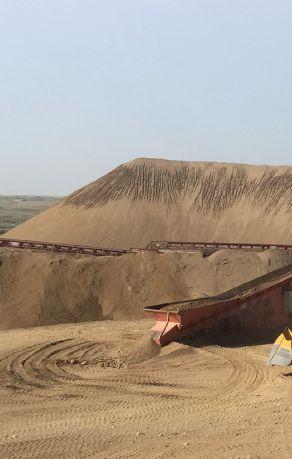


• Annual Golf Scramble


• Community Events


• CompanyPicnic
• Milestone Celebrations



• and More!!
 By Matthew Mohr
By Matthew Mohr

As a business succeeds, one possible path to grow comes from acquiring other similar businesses in the same region or in the same industry or outside of the current trade area. Many business purchases come with added challenges and many difficulties.
It seems fundamentally easy if you have created a successful business model to duplicate that success elsewhere. A business owner may think the business model in the home market has worked so well, just go buy market share elsewhere and duplicate the operation and grow to greater success.
An attitude or formula like this would be classic business school (MBA) teaching; however, it rarely works out easily and is a lot harder than one would expect.
Each business organization has created with its success or failure a unique culture and attitude along with a way of doing business and it is not easy to make changes to these attitudes or business practices. Generally people are comfortable with how they do things and resist changes - even changes for the better can create employee unrest.
At one time I acquired a business from a very strong handed owner who had built a nice small organization. He ran his business completely, including all aspects of the operation. After starting to make some operational changes, we heard rumbling from some employees. We held a meeting and, to my surprise, the business owner during the meeting announced to the group of employees, “There is a reason he acquired us and not the other way around, so let’s get going with these changes.”
I was astounded at the comment because the business owner had built every aspect of business operations himself, but upon reflection, the comment just showed how good of a businessman he was. Changes in technology and systems are often a big source of frustration when integrating two organizations. People get comfortable with how they interact with and how their systems work, so a change in technology can create a lot of unrest.
I cannot ever recall hearing a front line employee ever say the acquisition system is easier, better or more efficient. If a business is far behind technologically, any attempt to fold in a different organization through acquisition is going to be even more challenging if not a disaster.
A friend of mine sold his family business to a big investment group and initially was thrilled with their “hands-off” approach. He boasted to me how wonderful it was after the sale being able to run the business just like he had always done along with doing whatever he pleased, but not having to worry about making payroll or meeting financial obligations and such.
A short time after this initial discussion, I noticed he was not at a meeting he usually would have attended. I later asked him why he missed the meeting and he replied, “I was free to go to the meeting, but “XYZ” (acquiring company) is cutting expenses and if I wanted to go, I would have had to pay the cost personally”. Certainly this was embarrassing for him to admit, especially in light of his prior comments, but he was required to follow the direction of his new owners.
When growing through any acquisition even if buying market share or adding a product, the acquirer is adding people to their organization. The group of employees from the initial organization plus acquired business may have developed a unique bond and a work culture with which they fit and usually enjoy.
Breaking up the uniqueness may lead to complete disaster, but not making adjustments will rarely produce accelerated results, so many challenges along with frustrations can occur. Rarely can two organizations merge to become “one big happy family” without some difficult changes to one or both of them.

Congratulationsonyour 2021PrairieBusiness Leaders &Legacyaward!

Thankyouforthecontributionyou maketothecustomers,employeesand communitieswe’reprivilegedtoserve. We arehonoredtohaveanauthentic, innovativeleader likeCraigguidingusin business,banking,andin life,leadingby examplethroughStarion’svalues.

Congratulations to this year’s Leaders & Legacies Award Winners!

Prairie Business is pleased to announce 2021’s Leaders & Legacies recipients.

These are executives of the highest caliber, who have demonstrated time and again what it means to lead by example and hard work.
To each of the nine recipients, Prairie Business extends its warmest thanks for all they do to help make the region a better place to live and work. Their careers have not gone unnoticed, including those who have retired or plan to do so; their work still impacts many. Once again, thank you and congratulations!
Craig Larson was born and raised in Valley City, N.D. After graduating from Valley City High School he went on to earn an undergraduate degree in finance from Arizona State University. He also graduated with honors from the Colorado Graduate School of Banking at Boulder, Colo.
Larson began his career with Starion Bank as comptroller in 1985. He served in various capacities until being named president and CEO in 1997. In 2017, he was named chairman of the board. Under Larson’s leadership, Starion Bank has grown from approximately $200 million in assets and five North Dakota branches to $1.60 billion in assets with 13 branches in North Dakota and three branches in the Madison, Wis., area.


The financial performance of the bank consistently receives the highest ranking possible from BauerFinancial, an independent bank rating firm, and has earned recognition among the nation’s top performers by Independent Banker magazine.
Larson attributes much of this success to being a values-driven, family-owned organization with a strong culture of giving back to the communities they serve.
He has effectively positioned the organization as a “supercommunity bank,” with the sophisticated products and broad offerings of the largest banks – at the same time offering the personal service, flexibility and access to decision-makers offered by small community banks.

Living out Starion’s value of giving back, Larson has long been active in the community and region serving on a variety of boards in the banking industry, higher education, community and children’s services and conservation.
Recently, he served as the advisory board chair for the Prairie Family Business Association, an organization that builds relationships and offers high-quality educational programs that promote successful family businesses. Larson currently serves on the Board of Trustees of the Minnesota, North Dakota, South Dakota Chapter of the Nature Conservancy, in support of its mission to leverage nature as a tool to build a brighter future for all North Dakotans.
Married to his wife, Shelley, for 30 years, the couple raised two beautiful daughters, Paige, 27, and Annika, 22.
Bill Hinks is founder and chairman of the board of Furniture Mart USA, the nation’s 35th largest furniture retailer based in Sioux Falls. The three-generation, family-owned company operates 59 stores under the Ashley HomeStore, Furniture Mart and Unclaimed Freight Furniture brands in 35 communities across six states – South Dakota, North Dakota, Minnesota, Iowa, Wisconsin and Illinois.
William A. HinksHinks’ first retail and customer service experiences came at the age of 12. His family operated a grocery store, open daily, connected to their home in Siren, Wis. At age 22, with $50 in his pocket, Hinks drove his old Buick to South Dakota to begin a remarkable career that spans six decades and counting.
Sioux Falls, S.D.From route salesman for Old Home Bakery to service station owner to mobile home developer, Hinks embarked on a variety of successful business ventures in the 1960s and ‘70s that led to his ultimate entrepreneurial discovery. New mobile homes came with surplus furniture, so Hinks hosted semi-annual furniture sales from his garage. Inspired by their success, he attended his first furniture market in North Carolina and the rest, as they say, is history.
“It all started with a single store and a dream,” recalled Jim Heinitz, long-time friend and retired CEO at Furniture Mart USA. “Bill’s vision has inspired every employee to strive for success, support others, and always lead with a giving attitude.”
Hinks opened his first Unclaimed Freight Furniture store in 1977. In the 1990s, he purchased and renovated the Western Mall in Sioux Falls, anchoring it with his first Furniture Mart. In 2001, the company opened its first of what is now 31 Ashley HomeStores.
“Bill has demonstrated a high level of professionalism, business savvy and leadership ability all with an eye toward providing exceptional customer service,” said Todd Wanek, president & CEO of Ashley Furniture Industries. “In addition, Bill and his family, along with his employees, play an active role in the community. It certainly goes without saying that we are proud to be associated with Bill and his entire team.”
Today, Furniture Mart USA has grown to nearly 1,200 employees with annual sales topping $250M. Hinks is an icon in the furniture industry – a two-time recipient of the Ashley HomeStore Chairman’s Award and a member of the South Dakota Hall of Fame recognizing his legacy of professional and philanthropic leadership.
Charlie Vein, who retired this spring, co-founded AE2S in October 1991. Over his 45-year career, Vein mastered the art of forging meaningful relationships. Whether with clients or staff, state and federal agencies, legislators or local politicians, he made personal connections that benefited drinking water projects across the region.
Vein dedicated his engineering career to improving drinking water quantity and quality for residents across North Dakota, Minnesota, South Dakota, and beyond. Some of his highlights include serving as the project manager for the modernization of the city of Grand Forks Water Treatment Plant in 1984. He also led the effort in rebuilding the water treatment system after the historic flood of 1997 in Grand Forks, as well as the city’s subsequent recovery efforts.
During the height of the Bakken oil boom in western North Dakota, Vein invested considerable time working to find solutions to the problem of insufficient water supplies. He helped coordinate the infrastructure needs for the city of Williston, which more than doubled in population between 2010 and 2020. He was also instrumental in the creation of the Western Area Water Supply Authority through legislation in 2011.
In addition, Vein lists Ransom Sargent Water Users, Langdon Rural Water District, Grand Forks Traill Water District, and the Tri-County Water Treatment Plant as the career highlights of his rural water projects in North Dakota.

...we have space solutions
As the first plant he designed, the Tri-County Water Treatment Plant is particularly special. Vein was also instrumental in the development of the Grand Forks Traill Water District’s Reverse Osmosis Water Treatment Plant.
“Charlie is a wonderful mentor who went into the engineering field to improve people’s lives by improving their drinking water. I can say without a doubt, Charlie made a difference in the lives of thousands and thousands of people – from the residents of large and small communities across the eight states where AE2S has offices to the people he’s helped through his charitable work,” said AE2S CEO Grant Meyer.
Over the course of his career, Vein received a number of awards and accolades from industry water organizations and has volunteered with a number of organizations.
Navigatin gt he ‘n ew norma l’canbe to ugh.When yo urpersonalsp ac eb ecome sy ou rw or ks pa ce ,itm ay betim etor e-e va luat ey ourph ys icalenvironment .A t Ac ke rm an-Est vo ld,ourar ch itectsunderstan dh ow th e sp ac et ha ts ur ro undsusinfluen ce sp ro ductivit y. Wi th ar ch itecturaldesignservices,our‘hom et ea m’ can he lp cr ea te sp acesth a tp rov idebeaut y an d function, no mat te rw her ey ouroffic eisc ur re ntlylocated!

Contact your home team today. 701.837.8737

Recently Retired President of AE2S Grand Forks, N.D.
After serving as Altru Health System’s CEO for over a decade, Dave Molmen thought he retired, but a pandemic had other plans. When the Altru board asked him to return to help navigate the challenges of COVID-19, he was glad to lend a hand as Interim CEO.
“It’s one small way that I can show gratitude to the community that’s given me my whole career,” he said.



Molmen’s tenure at Altru spans more than four decades and many roles, but through it all, he’s been a catalyst for positive change. He played a significant role in the creation of the Health System, shaping a decade-long series of integrations culminating in the merger of the regional hospital and clinic systems. He oversaw an era of rapid transformation and helped to cement a ground-breaking affiliation between Altru and Mayo Clinic, the first of its kind in Mayo’s history.
N.D.

Eric Hardmeyer began his career at Bank of North Dakota in 1985 working for Joe Lamb as an administrative assistant. Sixteen years later, he succeeded John Hoeven as president when Hoeven won the gubernatorial election.

Molmen believes that service and opportunity go hand-inhand. Over the years he’s supported causes he cares deeply about, including the Grand Cities Children’s Choir, United Way, City Youth Committee, Altru Health Foundation, Valley Senior Living, Sharon Lutheran Church, North Dakota Museum of Art, and UND Research Foundation.
Molmen chaired the Grand Forks Chamber of Commerce through a historic merger with the East Grand Forks Chamber. Molmen served on the Board of Trustees of the American Hospital Association, North Dakota Hospital Association, North Dakota Chamber of Commerce, AHA Regional Policy Board, and VHA Upper Midwest. As chair of the UND School of Medicine Advisory Council, he played a key role in securing funding for the State’s $120 million medical school building. He’s been a mentor and preceptor to scores of leadership learners. Additionally, Molmen and his wife, Karen, established a scholarship for children of Altru employees.
Molmen’s leadership has earned him recognition as recipient of the UND President’s Medal, Medical School Dean’s Award, CVIC Peacemaker Award, Minnesota Volunteers Senior Leader Award, Friend of Medicine Award, North Dakota Grassroots Champion Award, and the Nelson-Miller Award for Volunteerism.
Molmen and Karen are the parents of two grown daughters and a son-in-law who live in the Fargo-Moorhead area.
As the 10th of 12 children born to Ted and Lorraine, Hardmeyer learned the value of service early. His father, Ted, was a Marquette graduate who served on every committee possible in Mott, N.D., in addition to being a business owner, entrepreneur, mayor and state legislator. Hardmeyer graduated from the University of North Dakota in 1985 with degrees in economics and political science, followed by a master’s degree from University of Mary.

Today, Hardmeyer is viewed as a politically astute man with strong vision and leadership for the Bank. He is the longest serving president who navigated times of great economic change with oil booms and busts, drought and natural disasters to ensure the Bank remains relevant and plays a critical role for the residents of North Dakota.
Under Hardmeyer’s leadership, BND’s assets grew from $1.81 billion to $7.74 billion and the loan portfolio increased from $1.16 billion to $4.75 billion. There were 16 consecutive years of record profits that began in 2004.
In addition to its strong financial position, numerous accomplishments are credited to Hardmeyer. He worked closely with the North Dakota legislature to build a new headquarters, which opened in 2008. His belief in helping families pay for postsecondary education led him to bring College SAVE, the state’s 529 plan, and North Dakota Dollars for Scholars to the Bank, rounding out the education financing options to include saving, scholarships, and student loans. Relationships with local financial institutions strengthened while he was president.
He currently serves on the Board of Directors for the Family Wellness Center and the Missouri Valley YMCA. He was a member of the Federal Reserve Community Depository Institutions Advisory Council, Federal Home Loan Bank of Des Moines, and is past Chairman of the North Dakota Bankers Association. Hardmeyer and his wife, Laura, have four children and four grandchildren.
Kathy Meagher was born in Rugby, N.D., and developed a passion for sports and athletics at an early age. As part of her upbringing, she was taught that hard work, dedication, and good values would lead to positive change in the world.


Meagher’s journey with the Special Olympics began in 1980 as a student intern while attending NDSU. Roger Kerns, the founder of Special Olympics North Dakota (SOND) and her faculty advisor, encouraged her involvement. Flash forward to 2018, when Meagher was recognized by the North American Special Olympics Professionals as being the world’s longest serving Special Olympics CEO.
When she started in her professional role with SOND in 1981, there were fewer than 500 athletes throughout the state participating in four sport programs.
Meagher’s unwavering determination to enrich the lives of this underserved population has resulted in the successful management of a non-profit that today has an annual average of 1,500 athletes who participate in 15 different sports, and offers several Healthy Athlete and unified sports programs that collectively in the last eight years has conducted 560 sports competitions.


On an annual basis, a minimum of 5,000 volunteers are recruited and trained to implement community and school-based programs. These programs offer exposure to positive and meaningful life experiences to those with intellectual disabilities.


Meagher worked extensively through the international program to organize hosttown experiences for Special Olympics athletes from North Dakota and the US, and she has attended 16 world events. She also brought a Special Olympics North American tournament to the state and led the process to secure a bid with North Dakota to be one of the finalists to host the 2018 National Games.
“Kathy is a leader that has pushed the entire movement forward,” said Dr. Timothy P. Shriver, chairman of the Board of Special Olympics International. She has done this by “unleashing the potential of people with intellectual disabilities, and by demonstrating to all the importance of social inclusion and the promise that all North Dakotans can achieve anything when we trust in the best of the human spirit.”
Architect Kevin Donnay has been the president of Widseth since 2013 with a focus on cultivating the firm’s sustainable growth, building a strong firm identity and culture, and nurturing staff development. Donnay joined Widseth in 1996 and has seen many changes over the years. With this perspective, he is respectful of the firm’s distinguished history but also mindful of its necessary evolution.

Donnay has overseen several initiatives that have strengthened the firm, including opening two new offices in strategic markets, Forest Lake and Mankato, Minn.; acquiring an aerial mapping firm that added a new service line to Widseth’s subsidiaries; the complete rebrand of an outdated corporate identity; and an overhaul of the firm’s strategic planning process.
Chief among his recent executive achievements is steering the firm through the tumultuous COVID-19 pandemic. Throughout, Donnay has displayed his characteristic even-keeled approach to the unstable and unknowable economy, workforce, and local, state, and national guidelines and Executive Orders. Donnay guided the firm’s Board of Directors through solid decision-making, and, as a result, while many businesses were hard-hit by pandemic-induced setbacks, Widseth’s 2020 gross earnings were only slightly lower than the previous year. Prior to 2020, Widseth had achieved year-over-year revenue growth throughout Kevin’s tenure as president.
While Widseth suffered losses during the past year – business and personal – there were silver linings. And because of his optimistic forward-thinking, the firm is poised to do better this fiscal year than the last pre-pandemic year.

Donnay dedicates considerable time to city commissions, community organizations, and strategic planning efforts. He is tapped into his community through his considerable involvement in professional and service organizations, on the board of directors for multiple non-profits, and his active involvement in his profession.
Under Donnay, the firm has twice earned the distinction of being one of Prairie Business’s 50 Best Places to Work. The firm maintains nine offices in Minnesota and North Dakota and employs more than 220 people representing a wide range of disciplines, including architecture, engineering, land surveying, environmental services, and associated fields.

Pete Fullerton progressed from being a regional bank trainee to leading regional bank teams and then to leading Cornerstone Bank as CEO, the position from which he recently retired.


Throughout his career, Fullerton provided leadership in a wide variety of roles including opening and operating a de novo bank as well as leading Cornerstone Bank through a merger, which brought together three banks of equal size (Cornerstone Bank, Lakeside State Bank, and McKenzie County Bank), and was like no other in North Dakota.
He also saw Cornerstone Bank through additional growth, including expansion into new markets. Fullerton has mentored many bankers across the region and has had a positive effect on numerous careers.
He also has been active in the community, often in leadership roles. He served as Board Chair and community campaign chair for the United Way of Cass/ Clay, as well as board chair of the Cass/Clay YMCA. He played a key leadership role in creating a coalition of private investors, economic development organizations and the United Way to create a New American workforce development initiative.
Fullerton currently serves as board chair for the YMCA Endowment Fund and as treasurer for the Northern Waters Land Trust.
He holds a bachelor’s degree in Business Administration from the University of Iowa and holds a degree from the Stonier Graduate School of Banking.

Dr. Richard Vetter is a family practice physician and the chief medical officer at Essentia Health in Fargo, N.D.


Dr. Vetter grew up in Linton, N.D., on a family farm. He attended college at North Dakota State University and obtained his medical degree and completed his family medicine residency at the University of North Dakota School of Medicine & Health Sciences. He has practiced at Essentia Health in Fargo for 30 years and was named chief medical officer in 2019.
Richard Vetter, MD Chief Medical Officer of Essentia Health Fargo, N.D.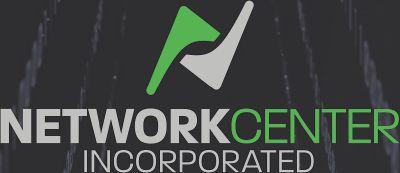

Dr. Vetter has experience in integrated health system operations, rural health care, multi-specialty group practice management, physician compensation, strategic planning, organizational governance, foundation development/fundraising and public advocacy. He is a clinical assistant professor of family medicine at the University of North Dakota in Grand Forks and serves as volunteer medical director for the First Choice Clinic in Fargo.
Dr. Vetter has served as president for the North Dakota Academy of Family Physicians and for the North Dakota Academy of Family Physicians Foundation.
Additionally, he has served as past chair on the Dakota Medical Foundation Board of Directors and currently serves as a director on the board of Blue Cross Blue Shield of North Dakota. In 2009, Dr. Vetter was named North Dakota Family Physician of the Year. He also was named Best of the Valley Family Health Physician in both 2013 and 2014.
Dr. Vetter and his wife, Sharmae, are the proud parents of nine daughters.

Q: How does Blue Cross Blue Shield of North Dakota generally go about attracting new talent?
A: BCBSND’s vision is a new level of health and well-being in North Dakota and beyond, so we are looking for employees who are ready and excited to contribute to that. Each position we hire is unique, so we have focused our outreach based on the position we are hiring. We utilize our college relationship and internship program to introduce the opportunities that BCBSND has to offer as an opportunity to have them stay in the area. Now that we have stronger capabilities in working remotely, we’ve been expanding our searches, hosting virtual career fairs, and connecting with professional organizations to find the best talent.
Q: What are some recruitment challenges it has noticed, and how has it met those challenges?
A: The competition for talent not only locally, but nationally as well, continues to be fierce. We’ve adapted by utilizing some creative sourcing methods, targeting candidates that may not be traditionally found through a normal LinkedIn search. We are also thinking differently about hiring for skill, which has allowed us to narrow down the type of candidate we are trying to hire specific to that job.
Q: What is one of the best ways the company has found to retain employees?
A: In 2021, we’ve continued our focus on employee wellbeing as a priority focused on ensuring that our employees have a strong work/ life balance, have the right tools for mental health, and encourage physical health. We have spent time teaching our leaders how to support employees through their wellbeing journey. In addition, we are focused on the employee experience from hire to retire through the continuous improvement lens with the goal of ensuring our employees can focus on their jobs and career growth. Transparent communication from the top down is also a priority to ensure employees are well versed in the day-to-day happenings of the company. Lastly, we
Q: What does Flint Group look for in new hires to make sure they fit with its workplace culture?
A: I think a big thing we look for is a genuine personality – we want people to be themselves through the interview process so we can get to know who they are, not who they think we want them to be. We also look for candidates that are motivated, hardworking, and flexible.
Q: How do new employees learn about Flint Group’s expectations and management style?
A: Each one of our roles and managers are different. Each new employee will sit down with their manager to talk through the role, their responsibilities and expectations of them. The manager will also discuss their own leadership and communication styles as well as
also offer and encourage teams to participate in local volunteer opportunities, allowing our teams to step away and help the community.
Q: What does the company do that helps employees prepare for leadership roles?
A: As employees move into leadership roles, we have built a New Leader Program that walks through their first year of leadership. The program focuses not only on teaching the tools, but also provides educational opportunities with other new leaders to learn more about what it is like to lead at BCBSND. Each new leader is assigned a mentor who also assists with guiding them as they learn.
Kelsey Roth Vice President Human Resources Blue Cross Blue Shield North Dakota
Q: In what ways does the organization help employees feel like they are valued and their contributions meaningful?
A: Our focus is to celebrate the wins and learn from our mistakes (and move on). Recognizing and appreciating good work continuously evolves, but a quick “good job” or a “thank you” across all levels of the organization is a constant. We also celebrate birthdays, work anniversaries, retirements, and all of the milestones that happen over the course of time.
Q: What are some steps the company has taken to become more diverse with its workforce?
A: Inclusion and diversity is very important in the work that we do at BCBSND. We’ve recently created a team of employees from across the company who focus on ensuring that employees are able to bring their whole selves to work and are empowered to do their best work. We are also focused on continuous teaching and learning, embracing new ways of thinking and building our community around us.
talking through the new employee’s communication style and what motivates them to do their best work.
Q: What types of ongoing training or career development opportunities does Flint Group provide for employees?
A: We provide training/career development specific to each person. We recognize that everyone grows different and has different aspirations in life. Employees can plan out a specific path with their manager and work towards that at a pace they’re comfortable with and that keeps them engaged and interested in their training(s).
Q: How does Flint Group keep employees engaged in the workplace and help make them feel their work is important and valued?
A: We have several formal programs to keep employees engaged as well as some informal aspects. We have a Young Professionals Committee that is tasked with listening to employees and finding new initiatives to keep all employees engaged and loving what they do. We also have an employee recognition program where employees are recognized by fellow employees for great work they’ve done based on one of our values (Aim High Award) – the nominations are posted to a public chat channel for all employees to celebrate the nominees. We also have quarterly townhall meetings where we go over important information regarding goals and progress in the agency; the goal is to show employees their individual impact to their teams and the agency as a whole. Informally, we try to create a creative and effective workspace for employees to do their best work. Whether it’s heads down work at their desk, working in collaborative spaces with co-workers, or working from home if that’s where they’re most productive.
Q: What measures does the company take to ensure a strong work-life balance for employees?
A: One of our values is Go where you’re needed most. We celebrate employee’s home lives and recognize that sometimes the place they need to be is at their kid’s sports game, a vet appointment for their
Q: How does Jamestown Regional Medical Center generally go about attracting new employees?

A: We use a variety of mediums, including, our website, third-party websites, social media and newspaper ads. We also use a variety of tactics including relocation and sign-on bonuses for particularly hard-to-fill positions.
One of our differentiators is our award-winning team and culture. We are both a Top 100 Best Place to Work in the country and Top 20 Critical Access Hospital in the nation. Those awards and our legendary team make us a destination for care in the region.
Q: What role, if any, does social media play in the recruiting process?
A: The role it plays is awareness. We leverage the images of our high-performing employees and use them in our recruitment efforts.
Q: How important are employee benefits (health insurance, retirement, etc.) when trying to attract new hires?
A: They are very important. One advantage we have is a new employee is eligible for benefits beginning the first of the month (rather than 30 or 90 days after date of hire).
JRMC also has a robust and generous retirement plan, which is attractive to new hires.
Q: What are some proven ways the company has found to retain employees?
A: At JRMC, we strive to be THE difference in the lives of those we serve. One of the ways we do that is to recognize our employees for their legendary work. Some of the ways we do that is through Difference Leaves, which are simple notes to demonstrate our appreciation. We also have a Legend Award, which is the highest honor a JRMC employee can receive. This is a peer-based award, in which employees both nominate and vote for high-performing employees.
pet, or anywhere else that needs their attention. Our employees support each other and have each other’s back when someone needs to be out of the office.
Q: What are some steps the organization has taken to become more diverse with its workforce?
A: For years we’ve held an EEOC and Affirmative Action Certification through the states we work in and have taken a look at the diversity in our workforce each year and have set goals to improve where we need to. In the past year we’ve also started working towards the launch of an IDEA Council (Inclusion, Diversity, Equity, Accessibility) to design a formal program that creates a nurturing culture and environment where ALL employees feel valued, respected, and able to succeed.
Other ways we retain employees is through events like coffee and cookies events in celebration of our Top 20 Critical Access Hospital award or evenings at the summer theater in celebration of our Top 100 Best Place to Work award.
Each year, we also conduct the Employee Engagement survey. After we review the survey results, each department creates an action plan for administration to review.
Q: What are some steps the company has taken to become more diverse with its workforce?
A: We are diverse at JRMC. The steps we’ve take are to hire a diverse body of individuals, reflective of our employee body and our community.
Our admin and manager team is also about 70% female, reflecting the ratio of male to female workers in healthcare. The team is also diverse in age, spanning from late 20s to nearing retirement.
Q: What makes JRMC a great place to establish a long-term career?

A: JRMC is a pleasant place to work and build a career. It’s friendly and approachable. Your voice is heard. You can feel safe bringing forward concerns. During the most challenging time – the nation’s pandemic – employees started referring to themselves as part of the “JRMC family.” This was not a key message or language introduced from the leadership team. It grew organically from within and remains that way today.
JRMC is also a safe place for patients and visitors. It’s a great place to receive care and a great place to work.
 By Andrew Weeks
By Andrew Weeks
GRAND FORKS, N.D. • Ever since the late Lonnie Laffen co-founded JLG in 1989, the company has prided itself on the people it attracted and the culture it developed.
Thirty-two years later, it has grown into the company it is today because of those people and that culture.
But in some ways it is a better company today than it was just seven years ago. That year, 2014, the Grand Forks-based architect and design firm adopted an Employee Stock Ownership Plan, otherwise known as an ESOP.
“We’ve always had this really strong culture of ownership in our organization, and so the idea of having broad employee ownership,
we felt, really aligned with our culture,” CEO Michelle Allen said in an interview with Prairie Business. “We were already an open-book management company; we already had really transparent communications. We’re a highly engaged organization, and it seemed to fit our company well.”
There are several ways employees can become invested in a company. Buying stock directly into a company or obtaining stock through a profit-sharing plan are a couple of examples, but there are others. The most common form of employee ownership is the ESOP, according to the National Center for Employee Ownership. “ESOPs,” according to NCEO, “are most commonly used to provide a market for the shares of departing owners of successful closely held companies, to motivate and reward employees, or to take advantage of incentives to borrow money for acquiring new assets in pretax dollars. In almost every case, ESOPs are a contribution to the employee, not an employee purchase.”
JLG started considering an ESOP as early as 2007, but began moving closer to that reality in 2012 when it hired eight minority partners. At the time, its then four partners came together to discuss what kind of company they wanted JLG to become. The consensus was they wanted it to be a legacy company, one that accomplished memorable and impactful projects in the communities in which their team worked.
And, Allen said, they wanted to attract and retain the best talent possible. To that end, “we were going to have to be a place that offered them limitless opportunity,” she said. “That would mean
being able to extend partnerships and expand partnerships, which in turn would require us to continue to grow. It’s kind of a self-perpetuating plan.”
They hired a consultant and did strategic planning to start bringing their vision to life. The consultant told them it’d take at least five years to get their plan in place, but Allen said they responded by saying, “‘Oh no, we’re fast learners and we’re going to get it done sooner than five years.’”
The team even worked with the state in an effort to allow non-architects to become part owners in the firm, and that same year, 2012, it added the eight minority partners. The benefits of becoming an ESOP have been markedly noticeable.
According to the National Center for Employee Ownership, there are 306 ESOPs in Prairie Business’s three-state coverage area – the Dakotas and Minnesota – and 262,798 participants. Minnesota has the largest number with 225 ESOPs, followed by North Dakota with 58 and South Dakota with 23.
Moore Engineering, which became an ESOP in 1998, is one of them. The initiative at Moore, headquartered in Fargo, N.D., started as a “vehicle for retirement,” said Human Resource Director Joni Smith.
It was time for one of the owners to retire and that prompted the discussion, the same scenario that often sparks the succession planning topic. That’s what an ESOP basically is, she said, “an owner transition or succession planning” option.
Moore Engineering also is a better company today because of the ESOP, Smith said, in part because it has helped employees to feel more invested in their work because, frankly, they are more invested.
Like JLG, the ESOP also has gone a long way in helping Moore attract new talent to the company. More importantly, it helps retain them.
Employees at Moore can become fully invested after six years of employment, Smith said, but many want to stay long-term because of the benefits of the ESOP, not only financially but what it creates as a company culture.
“We’re a civil engineering company. There are some stats out there that say how civil engineering companies that have an ESOP versus those that do not perform quite a bit better,” Smith said. “Part of that is financial, of course, and that’s great, but it’s also because of ownership. You’re part owner of the company, or you own the company, and you realize that what you do affects the bottom line, that what you do makes a big difference and does have an impact.”
She said Moore wants people to retire with the company and the ESOP is a great incentive. It also helps create a strong team culture.
“I think we’ve always done a great job living our values, even back in the day when we were established in 1960, Smith said. “We didn’t become an ESOP until 1998, but from 1960 to 1998 we were a fantastic company. But then we started to grow after we became an ESOP. We started to obtain more employees. … I think that what it really did is help us to maintain that sense of family, and that’s important to us. … And what that really did is just help us to move the company forward and to let us be sustainable for our employees.”
The culture, helped by an ESOP, is what initially drew Jeremy Welsand to Border States Electric Supply.
Before moving to Fargo, where he now works as chief financial officer for Border States, Welsand lived in Minneapolis. He did
some contract work for the company and noticed something different about its employees.
“I serviced Border States as an auditor, and I saw this organization, that they kind of did things a little differently. Their employees reacted differently; it was just a different experience,” he said. “I liked the organization because they were so different.”
He continues to see that level of dedication today, how employees go the extra mile. “Ultimately, they give that discretionary effort that goes above and beyond and that really makes the difference for customers for vendors for service providers,” he said.
Border States started its ESOP in 1984, but became 100% invested in 2000. Like other companies that have initiated an ESOP, it did so as part of a succession plan.

“That is typically how most ESOPs are formed,” Welsand said. “There’s family ownership and they’re looking for ways to continue the company. It depends on what your objectives are, if you want to take care of the people. If you have deep care of the people, an ESOP is a great way to do that.”
Welsand has been with the company now for 10 years, and has learned much more about ESOPs since joining. One thing he’s learned is that an ESOP definitely helps with one’s retirement plans, even going so far as helping some to retire early.
“It’s a great retention tool when people figure out what the ESOP is, how it works, and how it can impact their life individually. People stick around,” he said.
“Retirement is one of those things where ability is probably more important than the actual retirement itself. We have a lot of people that retire in their 50s. … Nowadays many people have to continue working into their 60s. It’s nice when people have choices. If they want to work, they can; but if they have the ability and the choice to retire early, that’s nice. Having choices in life is always better than not having choices.”
ANDREW WEEKS PRAIRIE BUSINESS EDITORTo date, there are 306 Employee Stock Ownership Plans in Prairie Business’s threestate coverage area.
Minnesota: 225 ESOPs, 262,798 participants
North Dakota: 58 ESOPs, 14,558 participants
South Dakota: 23 ESOPs, 4,162 participants
Source: The National Center for Employee Ownership
In the construction and engineering world, several project delivery methods exist.
The more traditional is the “design-bid-build,” which, according to Nate Weisenburger, drinking water practice leader with AE2S in Grand Forks, N.D., is a regimented process.
There also is the more streamlined approach called “construction management at risk,” or CMaR. It is just one of several alternative project delivery methods that is becoming more popular.

Though CMaR has been used by some companies for many years, others are only now becoming more familiar with it. AE2S started using it in 2014 on projects in North Dakota and South Dakota.
Another alternate project delivery method AE2S has used is “construction manager/general contractor” (CM/GC) for a project in Utah.
Alternate project delivery methods, rather than design-bid-build, provide opportunities for clients to get their projects done more efficiently, manage risk, and better control costs. ***
“There are several different ways to deliver projects, and most of the time we follow a prescribed process called design-bid-build,” Weisenburger said.
It may be the most common or traditional type of delivery method, but it also is one that is regimented and time-consuming.
Weisenburger said that process, which is less collaborative than a CMaR, looks something like this:
An engineering firm is hired by the owner of a public works project to complete the design phase. Once the design of the public works project is complete, it is submitted to the review agency for approval. After the review agency is satisfied that the design meets established criteria, the project enters the bidding phase. At that time, contractors interested in submitting a competitive bid obtain plans and specifications and have the opportunity to ask questions and request additional information.
The engineer provides formal clarifications by issuing addendums. Based on the plans, specifications and any issued addendums, contractors are required to submit their bids at a specified date, time and location.
“The bids received by the owner are essentially irrevocable,” Weisenburger said. “Once a bid is submitted, it is accompanied by a bond to basically give it credibility; the owner then has the ability to evaluate the bids received. We, as design engineers, assist the owner by reviewing the bids and provide a recommendation to award a contract to the lowest responsible bidder.”
After the recommendation is accepted by the owner, the contracting process begins, in which a general contractor is hired and construction finally proceeds.
“Like I said, project delivery by design-bid-build is a very regimented process, with emphasis placed on obtaining the lowest possible price for the prescribed work to be completed,” he said.
CMaR, on the other hand, helps streamline the process.
Basically, a CMaR is a project delivery method in which a construction management company acts as the project owner’s consultant during pre-development all the way through the construction phase.
CMARs are a better option if an owner wants a more collaborative delivery process, because it allows the entire project team – designers, engineers, construction managers – to gather early in the proces, said Christopher Thomas, office manager for EAPC Architects Engineers in Fargo, N.D.
This is done so the entire team can collaborate and provide a guaranteed maximum price (GMP) earlier in the process. This allows the owner to start locking into funding and doing those types of things that help them in the long run with, among other things, budgeting.
“The CMaR allows the group to collaborate and work together through the design and into the construction phase to get the best possible outcome of the project,” Thomas said.
The alternate project delivery method AE2S has used most is CMaR. Weisenburger said it is not new – it has been around for a long time – but the company has been using it for about seven years. It is one that can have significant benefits, depending on the project.
The company used CMaR for the Grand Forks Regional Water Treatment Plant. It also was beneficial for clients and projects in Pierre and Sturgis, S.D., and Watford City, N.D.
But it was the Grand Forks Regional Water Treatment Plant, he said, that “takes the cake.”
“The overall project cost was $152 million,” Weisenburger said. “The CMaR delivery method was desirable for the ability to obtain technical input from the contractor on constructability, materials, and other technical aspects during the design phase.
“The information provided by the contractor provided value as it was also used for cost control purposes, where the owner could make informed decisions while knowing the anticipated impact on the bottom line.”
As for the future of alternative project delivery methods, time will tell what other methods will be developed in the future, but for now it seems that CMaR is one that is catching on with some companies.



“It’s definitely becoming more of a mainstream type of delivery method,” Thomas said. “Thirty or 40 years ago it was kind of a oneoff; you’d see it every now and then, but now it seems like it’s much more of the preferred method than going through a competitive public bid type process.”
Thomas said EAPC has used CMaR for years, but he is noticing more companies are starting to use it more as an alternate delivery method.
Design-Bid-Build vs. Construction Manager at Risk Conventional Design Bid Build Method
Owner has a vision to build a building
Owner hires architect to design building
Architect assembles construction documents (Floor Plans, Elevations, Sections, Details and Civil, Structural, Mechanical, Electrical Engineering drawings) and sends them out to bid through an invitation to bid.
Contractors bid the project according to the construction documents provided by the architect.
Owner selects the lowest most qualified bid.
Construction Manager at Risk

Owner has a vision to build a building
Owner hires architect to design building
Owner hires construction manager to build the building
Owner, architect, construction manager collaborate to develop construction documents
During collaboration CM provides owner and architect with estimates for building and provides GMP
CM breaks down the project into bid packages and hires contractors to work with in the GMP provided.
FARGO, N.D. • Enclave said it has plans to break ground on a new mixed-use residential community in North Fargo called Wild Oak.
Located in the historic Oak Grove neighborhood at Oak Street and Sixth Avenue, the building will feature 14 top-floor private entry condos with apartment homes below.
Designed in collaboration with ESG Architects and TL Stroh Architects, the for-sale condos — which measure from 1,200 to 2,500-plus square feet — will be offered in three design themes: farmhouse, traditional and modern. Buyers will have the options to tailor their space.

Complete with a separate entrance and elevator, each condo includes a balcony, 12-foot ceilings and floor-to-ceiling windows that optimize views of Wildflower Grove Park, the Red River and downtown Fargo.
“Just steps from downtown Fargo, Wild Oak offers an unparalleled living experience. We drew inspiration from the area’s tree-lined streets and riverscape setting to create a cohesive indoor-outdoor experience,” said Austin Morris, co-founder and CEO of Development at Enclave.
“Our team and partners have worked closely with city representatives and community members on a plan for the site that would maximize value and enjoyment by all, and we’re extremely proud to see it come to fruition this summer.”
A lifestyle-driven community, Wild Oak’s amenities will include trail connectivity, an outdoor courtyard, underground parking, fitness studio and more.
The project is expected to break ground by early July with a December 2022 completion date.
The site is the future home of Center for Special Surgery’s new medical office
WEST FARGO, N.D. • The Center for Special Surgery held a groundbreaking in June for its new medical office, located along 23rd Avenue in West Fargo.
The new building is part of a 90,000 square-foot Class A medical campus that will house multiple clinics, including an urgent care center, onsite pharmacy and second-floor Ambulatory Surgery Center (ASC), according to information sent to Prairie Business. It will be home to Center for Special Surgery’s network of physicians specializing in Ear, Nose and Throat, Orthopedics, Ophthalmology, Neurosurgery, and Plastic Surgery, among other specialties.


FARGO, N.D. • Essentia Health’s Occupational Medicine Department will be relocating from the West Fargo clinic to a new location.
Essentia, which made the announcement recently, said occupational medicine services will be offered at the hospital’s North Fargo Clinic, 1100 19th Ave. North in Fargo.

Clinic hours will remain 8 a.m. to 5 p.m. Monday-Friday; the phone number also will remain the same.
The new clinic offers a convenient location near the Industrial Park as well as front door parking. The new space is designed for work injury care, employment physicals, drug testing and more.
More news with Essentia includes it being ranked a top rating by a national group.
The Centers for Medicare & Medicaid Services has released the 2021 ratings for hospitals as part of its Care Compare program.
Essentia Health-Fargo received the only four-star overall rating among Fargo hospitals. In addition, Essentia Health St. Mary’s-Detroit Lakes received a fourstar rating.
The overall rating is based on how well a hospital performs across different areas of quality, like treating heart attacks and pneumonia, readmission rates and safety of care.
These Essentia facilities also each achieved a four-star patient survey rating. The patient survey rating measures patients’ experiences of their hospital care. Recently discharged patients were asked about important topics like how well nurses and doctors communicated, how responsive hospital staff were to their needs, and the cleanliness and quietness of the hospital environment.
“High quality patient care and safety is the standard at Essentia Health,” said President Dr. Bill Heegard. “This high rating is one more way to let the public know receiving care at Essentia Health is safe and the highest quality.”
The three-story building will offer five build-to-suit tenant spaces ranging from 4,42511,135 square feet on the first and third floors. The campus will be made complete with an Ophthalmology Center that will be connected to the Medical Office building.
Location of the site is behind Costco with visibility from Interstate 94.
“The new facility will continue to advance our current understanding of same-day surgery and transform the outpatient experience through convenience, comfort and creativity,” Jed LaPlante, administrator of Center for Special Surgery, said in a statement.
“With fully equipped operating rooms, the availability of cutting-edge medical technology, and private recovery space, the Ambulatory Surgery Center planned for the second floor of the building allows tremendous cost savings for patients on surgical procedures while providing an exceptional experience for patients, families and our independent medical community.”
SIOUX FALLS, S.D. • Carol Rademacher, whose husband owned a typewriter business in the 1980s, had an idea: Why not branch off of that with a time and attendance management company?

The seed was planted for what today is called Time Management Systems, or TMS.
It started in 1985, and now 36 years later the company, thanks to technology and an innovative leadership team, looks different than it did more than three decades ago.
Back then it offered time clocks to businesses that employees used to keep track of their time at work. They’d “punch” in and out.
While TMS still offers that tool for companies who want them, it also offers a wide variety of other tools to help companies and their employees manage time and attendance and to keep track of their benefits. It also offers security options and, something new since the coronavirus pandemic, a way to tell if employees are ill before clocking into work.
The female-led company, headquartered in Sioux City, Iowa, is today owned by Rademacher’s daughters, CEO Mindy Kroll and CFO Jen Vanderloo. It has four offices, including one in Sioux Falls, S.D., and over the years it has acquired other companies, growing its footprint and services, including one it had acquired in 2008 called Time Management Systems in Florida. It kept the name and kept growing from there, said Ashley Pugh, the company’s marketing coordinator. Before the acquisition, Rademacher’s company was called Midwest Office Automations.
The company sells its software products to businesses all over the country, but its primary clients are in the Midwest, including the Dakotas and Minnesota. Pugh said there are a number of clients in North Dakota alone, and it seems to be a growing market.
By Andrew Weeks“We kind of have a niche in school districts and health care, but our software can work for anybody,” she said.
Clients are small businesses with few employees to large companies with many. The software can be coded to fit the needs and requests of any business partner.
“We’ve noticed a trend with school districts and health care facilities, such as nursing homes and assisted living centers. Hospitals tend to like our software because, like I said, we have that ability to code it specifically for them.”
Being a software and tech company, it was natural for TMS to smoothly transition to remote work during the pandemic. Pugh said team members took to the changes with ease, but are now starting to come back into the offices.
“Obviously (in some cases) you might not be as productive work-
THE SOUTH DAKOTA OFFICE IS ONE OF SEVERAL IN THE MIDWEST FOR THE COMPANY.
IMAGE: COURTESY OF TMS
A time management company with an office in South Dakota keeps growing in the Midwest
ing from home, but overall, and I hate to say it when other businesses have struggled,” she said, “but we actually had a very good year last year as far as sales.”
One of the tools that helped was the company’s new biometric clock it developed over the past year. Many companies that were using the old hand-clock way of punching in and out didn’t want their employees touching a high-use item like a manual time clock that some companies use.
“They don’t want people touching things and spreading germs, but want to try to mitigate that stuff,” she said. “Instead of wanting to use that hand-punch clock anymore they’re calling us saying, ‘Hey, you know we need something that our employees don’t have to touch.’”
The solution: a work clock that reads employees’ faces and takes their temperature at the same time.
“I know there are similar things out there, where businesses set temperature readings up in their lobby, but what we were able to do is take one of those clocks that you can stand in front of and have it read your temperature and also punch you in for work at the same time.”
TMS also has partnered with another company, called Clair, to offer a new benefit that lets employees access their pay even before they receive their paycheck — a sort of advance on what they will be paid during that pay period.


Pugh said the business that started with just a time clock is much different today, but just as focused on employee and business success as it was when it first started in mid-1980s America.

Something else that is different: there is a lot more competition today. That’s where Pugh is most pleased with TMS; she believes it has unique services and a focus on local.
Pugh said she and her colleagues, including the owners, are most proud of that local focus even as the company continues to grow.
“We like to say we’re national in scope, but we are really focused on local support,” she said. “We kind of have that down-home, family-run business feeling.”
ANDREW WEEKS PRAIRIE BUSINESS EDITOR AWEEKS@PRAIRIEBUSINESSMAGAZINE.COM 701-780-1276 | @PB_ANDREWWEEKSFARGO, N.D. • Carter Haman and Kade Kukowski recently joined Houston Engineering Inc.’s Fargo, N.D. and Thief River Falls, Minn., teams, respectively.
As a survey technician, Haman will be part of HEI’s survey team, supporting various civil engineering projects. He is a native of Perham, Minn., and earned an associate degree in civil engineering technology from Minnesota State Community and Technical College.
Haman’s previous experience before joining HEI includes interning with the Becker County Highway Department and being a seasonal foreman with a landscaping company.
As a civil technician, Kukowski will provide survey and design services, prepare reports and cost estimates for civil engineering projects, perform on-site construction observation duties, and support project managers with client communications.
Originally from Hermantown, Minn., Kukowski holds a bachelor’s degree in integrated engineering from Minnesota State University Mankato. His previous experience through engineering internships and co-ops include leading land survey crews,

collaborating with engineers on design plans, and performing construction staking and inspections.
Gunnar Cowing and Zygmund Fursa also have join Houston Engineering’s Fargo team as engineers.

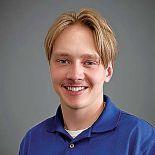
Gunnar will work on transportation projects supporting project managers with designs, reports, and construction observation duties.
Originally from New Ulm, Minn., Gunnar earned a bachelor’s degree in civil engineering with a minor in mathematics from North Dakota State University. His previous experience includes civil engineering and transportation internships, where he worked on state highway and city street projects in North Dakota and Minnesota.

Zygmund will work on water resource projects supporting project managers with designs, reports, and construction observation duties.
A native of Rochester, Minn., Zygmund earned a bachelor’s degree in civil engineering from NDSU. Prior to joining HEI, Zygmund worked for the city of Fargo as a seasonal construction inspector and was a teaching assistant at NDSU.
GRAND FORKS, N.D. • Alerus has recently hired Jack Tannahill as a financial guide. In this role, Tannahill is responsible for assisting clients in identifying their specific financial needs and providing comprehensive advice to help them achieve their financial wellness goals. He works closely with experts across Alerus to ensure every client has access to its full suite of diversified services to meet their needs.
Tannahill graduated with honors from the University of North Dakota in May, earning a bachelor’s degree in managerial finance and accounting. He will be based at Alerus’ new location at 500 Demers Ave. in downtown Grand Forks, which is slated to open this summer.

Alerus adds five specialists to SBA


Alerus has said it is strengthening its U.S. Small Business Administration lending capabilities with the addition of an expert SBA team.
Led by industry veteran John Kimball, who most recently served as SBA lending manager at MidWestOne Bank, the five-person team collectively has more than 100 years of business banking and small business lending experience at community and regional banks.
Members of the Twin Cities-based SBA team include John Kimball, SBA lending director; Angela Kazmierski, SBA lending advisor; Terri Fleming, SBA lending advisor; Tadd Johnson, SBA loan product specialist, and Katie Behrend, SBA loan servicing specialist. The team will collaborate with Alerus advisors to serve clients in Arizona, Minnesota, and North Dakota, in addition to developing and growing client relationships in the Twin Cities.


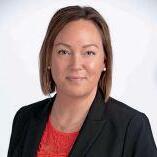


FARGO, N.D. • Nurse Practitioner Kalee Wysuph, who specializes in pediatrics, is now welcoming patients at the Essentia Health-South University Clinic in Fargo, N.D. Wysuph earned her nursing degree at Maryville University in St. Louis, Mo., and is certified as a pediatric nurse practitioner by the Pediatric Nursing Certification Board.
She said she chose pediatrics because it is a privilege to watch kids grow into their personalities and abilities.

Bismarck, N.D. • KLJ Engineering is pleased that Charlie Bowen, a structural engineer at the company, has earned his professional engineering license (PE) in North Dakota.

Bowen works from KLJ’s West Fargo location and focuses on design and the rehabilitation of bridges. He earned a bachelor’s degree in civil engineering from North Dakota State University.

I believe truly great leaders are humble and lead with humility. Most of you can look back and point to a mentor or boss that developed you. That person likely inspired you by recognizing your accomplishments – giving you credit, not taking credit themselves.
DirectorWhen a team member is not recognized for the contributions they make, there is a risk of them feeling undervalued, having lower morale and questioning if they are with the right employer or manager.

A humble leader is not afraid to give credit where credit is due. They are not big egotists that crave the limelight. They realize that to give recognition to their team for a job well done is one of the strongest compliments an employee might wish for. By providing that recognition and showing appreciation, it leads to a better work environment and creates team members who are confident, productive and committed. As employers and managers, I believe we would all be very happy with a team with these traits.
Every leader needs to let his or her team know that he or she is not above the difficulties they face. Whether it is the CEO sweeping a floor or the president taking a call from an upset customer, a leader shows they are not above the issues of those they lead by practicing servant leadership. By doing so the team knows that although they may have different roles, they share in the struggles encountered while having a common goal.
This characteristic also allows the team to grow in trust towards the one who leads, knowing they can rely on the service of their leader when tasks become tough. This characteristic is described by the most influential leader in history in the following passage: “a servant is not greater than his master, nor is a messenger greater than the one who sent him.”
Through this truth, Jesus gives us insight into one characteristic that I believe every leader should possess.
James Hoeft Design Engineer B&T Manufacturing Rapid City, S.D.


Every great leader knows how to empower their workforce. Every leader hires individuals to perform a certain task. But what often happens is the leader finds themselves at odds with the process of achieving the task. What I mean is that there are many minutiae involved in getting to the result. And leaders sometimes find themselves worrying more about the process each individual takes than the overall outcome.
Empowering the individual comes in many forms. It requires an ability to fully trust in the capabilities of your employee. This is a bit different than simply saying “don’t micromanage.” The true skill of empowering your labor force lies in the motivations of each individual. A good leader will take into account the subtle skill set differences in each individual and know how to cater to those differences.
Empowering your labor force means you have the ability to let your individuals shine. This is one of the hardest things to do, however, as it requires patience, empathy, critical problem solving, and time. Good leaders in general have the ability to empower their workforce, therefore increasing productivity, company atmosphere, and creating long-term employees. This characteristic in leaders proves paramount in creating strong companies.
Joe Hockett Business Development Manager RCS Construction Inc. Rapid City, S.D.
 Jen Turnbow Associate Director of Civil and Transportation Ulteig Bismarck, N.D.
Jen Turnbow Associate Director of Civil and Transportation Ulteig Bismarck, N.D.

Integrity and vulnerability. Integrity is the foundation of building trust, doing what is best every single day for the people and the organization. This means elevating the people and organization above one’s self, one’s title and one’s personal goals.
At Ulteig, it means that you are serving the organization in a way that is respectful, genuine, truthful and transparent. If an organization has no trust in leadership, the foundation eventually crumbles. You cannot have trust in a person without believing in their integrity. Leaders do what is right and speak up even when everyone believes something different. Integrity, simply, is doing the right thing even when no one is watching. Another essential characteristic is vulnerability. Allow people to know that you don’t have all the answers. Allow people to see beyond the title, beyond the hierarchy, and that you are human. Vulnerability builds trust. It also leads to empathy and understanding, which are two core traits of a healthy culture.
After their health and safety, finances were a top concern for individuals and families during the pandemic. Job insecurity, market instability, the financial implications related to health concerns, and the realization that they were drastically underprepared for an emergency kept many people awake at night.
“next generation” benefits packages address overall financial wellness by teaching employees how to manage debt, save for emergencies, and prepare for the future through a mix of technology and personalized guidance, without requiring additional time or resources from the employer. They also provide comprehensive products, ranging from retirement accounts to insurance plans and health savings accounts. Some popular options for financial wellness programs include:
An employee financial wellness survey released by PwC in January found 63% of employees said their financial stress had increased since the pandemic started. This was especially true for Millennial and Gen Z employees. But while the pandemic may have increased financial concerns for some, it simply shined a light on the ongoing concerns for many. Multiple studies conducted over the past few years had already concluded most Americans would struggle to come up with $500 for an unexpected cost. The pandemic was the ultimate unexpected occurrence, prompting people to re-evaluate their financial situations and how to better prepare for the future.
For employers, the financial stability of their employees is not just a payroll issue. Financial stress spills over to the workplace in the form of decreased productivity and increased absenteeism.
It can also impact recruitment and retention efforts. This is reflected in the PwC study, which asked employees if they would be attracted to another company if they felt it cared more about their financial well-being than their current employer. Of the employees who said their financial stress increased during the pandemic, a whopping 72% agreed with the statement. Nearly 60% of employees whose financial situations were not impacted due to the pandemic also agreed with the statement.
Financial wellness programs, therefore, have become an increasingly important employee recruitment and retention tool. These
• Retirement accounts. Common types include traditional 401(k) accounts, SEP IRAs, or simple IRAs. Eligibility for these accounts may vary based on your company’s employee headcount and individual employee earnings. Other differences include withdrawal penalties, deferral limitations, and federal filing requirements for the employer, so consult a trusted advisor to make sure you are setting up the right plan for your company.
• Health savings accounts. These are long-term savings accounts specifically for health care costs that are paired with low premium, high deductible insurance plans. Contributions are not taxed, earn interest, and can roll over from year to year, enabling employees to build a nest egg for medical expenses.

• Personal financial fitness tools. The most effective financial wellness benefits packages combine personalized, professional advice with technology. Technology offerings give employees a full view of their finances and help them build financial confidence. Employees can use one tool to access their retirement account, track emergency savings, create personalized budgets, and manage debt, empowering them to take control of their financial future. Employees can set personal goals, use automatic transfers to save money and manage debt, and build new financial habits with guidance and encouragement from financial experts — no employer participation necessary.
The pandemic proved no one is immune to emergencies, and employers can play a significant role in helping their employees prepare for the unexpected. Companies who embrace this opportunity are likely to get a leg up on employee recruitment and retention, while helping their employees become financially confident.
Chris Wolf is the northern valley market president at Alerus, a diversified financial services company headquartered in Grand Forks, N.D.

How financial wellness programs can boost recruitment, retention, and your bottom line
Total nonfarm payroll employment rose by 559,000 in May, and the unemployment rate declined by 0.3 percentage point to 5.8%, according to the most recent data by the U.S. Bureau of Labor Statistics. Notable job gains occurred in leisure and hospitality, in public and private education, and in health care and social assistance.
The consumer price index for all urban consumers increased 5% from May 2020 to May 2021, according to the latest information from the U.S. Bureau of Labor Statistics. Prices for food advanced 2.2%, while prices for energy increased 28.5%. Prices for all items less food and energy rose 3.8% for the year ended May 2021, the largest 12-month increase since the year ended June 1992.

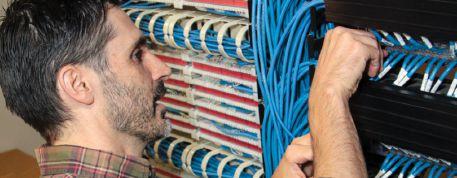
Source:
From the first quarter of 2020 to the first quarter of 2021, nonfarm business sector labor productivity increased 4.1%, reflecting a 1.1% increase in output and a 2.9% decline in hours worked. Unit labor costs increased 4.1% over the last four quarters, as hourly compensation increased 8.3% and productivity increased 4.1%.
Source: U.S. Bureau of Labor Statistics


The Freight Transportation Services Index (TSI), which is based on the amount of freight carried by the for-hire transportation industry, rose 0.7% in April from revised March, rising for the second consecutive month, according to the latest data by the U.S. Department of Transportation’s Bureau of Transportation Statistics. With the April increase, the index equaled the level of January 2021, the highest since pre-pandemic November 2019.
From previous month: 0.7%





From same month of previous year: 8.9%
Source: U.S. Bureau of Labor Statistics
Source: U.S. Bureau of Transportation Statistics
Ourmission isre flec tedinthework wedo ever yday.A nd it ’s thepeople of this placew ho inspireus. Here, we share ourlives ,our wor k, ours tories .It’speople likeV icky,w hoplanfort he unexpec tedto ensurepat ient sincri ticalsit uationsare in good hands, that make this placeunlikeany ot her.
We arecalled to make ahealthy diff erence in people ’s li ve s.



